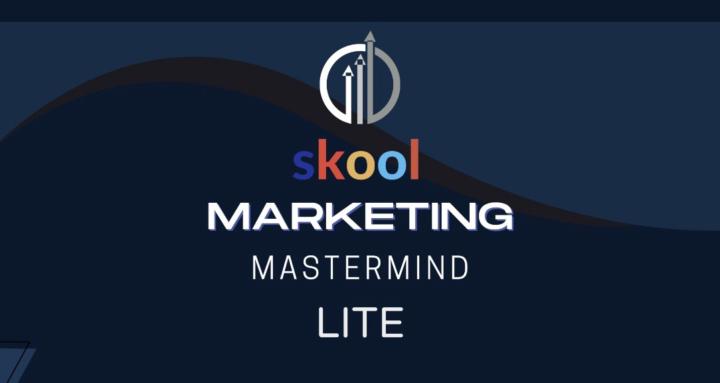
Write something
Pinned
START HERE - Welcome
Welcome to Marketing Mastermind Lite! You’re in the right place if you want to double your customers and grow your business with proven marketing strategies—without wasting time on guesswork. This group is all about high-impact insights, practical frameworks, and a supportive community to help you scale faster. Here’s how to get started: 👉 Step 1: Schedule a free discovery call (no sales pitch—just real insights to help you move forward). Want to get more customers but feel stuck? I’m doing free strategy calls to help you fix your marketing. This is your chance to get my direct help—for free! Book here: https://calendly.com/remodelingmybody/discovery-call I offer different calls for the first time: ✅“Quick Fix” Call (15 min) – Solve your #1 biggest marketing struggle. ✅ “Deep Dive” Call (30 min) – Get a full strategy breakdown. ✅ “Audit” Call (20 min) – Get direct feedback on your funnel, messaging, or ads. 👉 Step 2: Get personalized support, deeper strategies, and direct coaching—join the Marketing Mastermind for just $1/month, or grab the yearly membership for even more exclusive perks. Sign up here: https://www.skool.com/skool-marketing-mastermind/about Introduce yourself below! What’s the biggest marketing challenge you’re facing right now? Let’s make this journey a success together!
The Uniqueness Trap: When Your Perfect USP Falls Flat in the Real World
You did everything by the book. You identified a gap in the market. You developed a product with features no competitor could match. You crafted a unique selling proposition that made focus group participants nod enthusiastically and say, "Yes, I would absolutely buy that!" Then you launched... and the market responded with deafening silence. This isn't just our story. It's a pattern I've seen repeatedly with brands that prioritize differentiation above all else. Our particular version went something like this: The Perfect USP (On Paper) Our client's productivity app had a genuinely innovative feature set. We'd combined task management, habit tracking, and calendar optimization using a proprietary algorithm that promised "40% more productivity with 30% less stress." Focus groups were ecstatic. When presented with our USP alongside competitors, 87% selected our solution as "most appealing" and "most likely to purchase." Market research firms praised our positioning. Investors wrote checks. The launch was set. The Brutal Reality Check Six months post-launch, our conversion rates were hovering at one-third of projections. User acquisition costs were three times higher than budgeted. The few customers we did acquire weren't using our core differentiating features. Something was fundamentally broken, and it wasn't our product. The Authenticity Insight The breakthrough came during desperate customer interviews, when one early adopter made a comment that stopped us cold: "Your app is probably better than what I'm using now, but I don't believe it will make me 40% more productive. Nothing could. So I'm wondering what else you're exaggerating." There it was. Our unique selling proposition wasn't failing because it wasn't unique enough—it was failing because it wasn't authentic enough. Further research confirmed a pattern: As markets mature, consumers become increasingly skeptical of extraordinary claims. The very uniqueness we thought would differentiate us was actually triggering doubt.
6
0
When Your Best Customers Suddenly Stop Buying
The scenario keeps marketers up at night: Your loyal customers, the backbone of your business, suddenly vanish. No dramatic exit, no complaint emails—just the deafening silence of orders not placed. You check your data, wondering if you're imagining things. But the numbers don't lie. Your once-reliable revenue generators have ghosted you, leaving behind nothing but question marks and declining sales figures. The Invisible Trigger Most businesses make a critical mistake when this happens: they assume price sensitivity is the culprit and rush to offer discounts. But research shows that for 68% of formerly loyal customers, the decision to leave had nothing to do with price. The real culprit? Perceived indifference. When customers believe you no longer value their business specifically—that they've become just another transaction—the relationship begins to fracture. This perception often strikes immediately after their peak engagement with your brand, creating what behavioral economists call the "loyalty cliff." Your best customers actually have the highest expectations for recognition. The very people who have demonstrated the most commitment to your products or services are paradoxically the most sensitive to feeling taken for granted. The Silent Warning Signs Before customers disappear completely, they typically display subtle indicators that most businesses miss: - Decreasing engagement with marketing communications - Longer intervals between purchases - Fewer product categories in each order - Minimal or no response to promotions - Reduced interaction with loyalty programs The problem is that most businesses track these metrics in isolation rather than as an interconnected early warning system. When these indicators appear together, the customer is standing at the edge of the loyalty cliff, ready to walk away for good. The 3-Step Re-engagement Strategy After analyzing thousands of customer journeys across industries, I've refined a surprisingly simple 3-step process that has successfully recaptured 79% of at-risk customers when implemented properly.
6
0
1-3 of 3

skool.com/marketing-mastermind-lite-2478
For entrepreneurs and marketers focused on doubling their customers through smarter marketing strategies, better offers, and proven growth tactics.
Powered by


